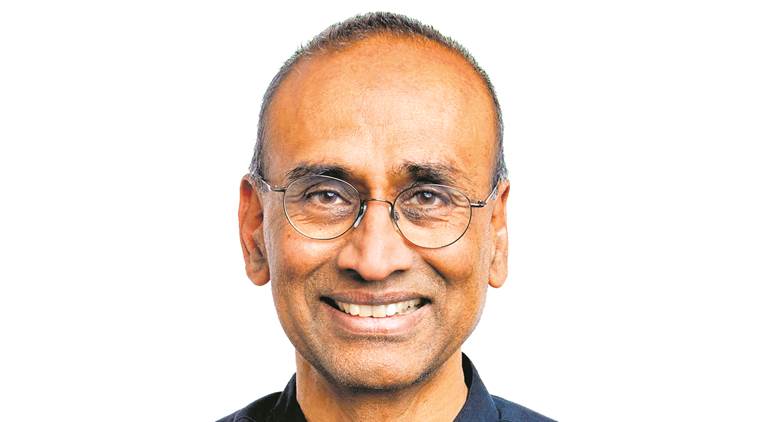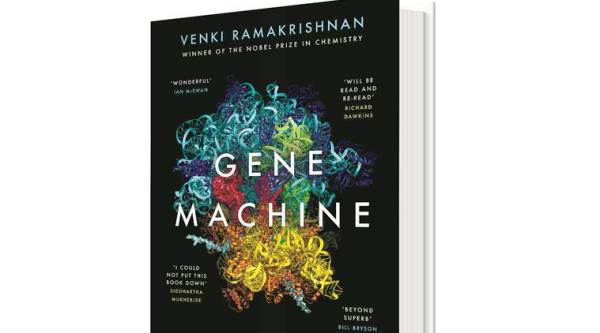Written by Pratik Kanjilal |Updated: December 8, 2018 12:10:52 am
Crystal clear
The theoretical physicist who wandered into chemistry and learned crystallography to answer one of biology’s oldest questions

If Joseph Campbell were still in our midst and were to read Venki Ramakrishnan’s account of his life in science, he would have unhesitatingly declared it to be a classic hero’s journey. It’s a gripping tale with all the stock elements of the classical epic — a tale of a mortal confronted by a challenge fit for the immortals, who brings a secret back from beyond human ken, with the help of friends he makes on the way, the guidance of a sage, and the gift of a weapon.

Venki’s friends are structural chemists and biochemists working on both sides of the Iron Curtain. He enjoys the patronage of several Yodas, pathbreaking scientists who step in and out of the story to change the course of his professional life, as he drifts from an unremarkable career in physics to structural chemistry and the life sciences. The hero’s weapon is central to the epic form, whether in the arming of Achilles or the familiar scene of Clint Eastwood strapping on his gun-belt in front of a chipped mirror in a bad burg in the Midwest. Venki’s Brahmastra is X-ray crystallography, and he takes a sabbatical to learn to wield it properly. The secret this scientific hero brings to us is one of the best-kept in the history of biology — the atomic structure of the ribosome, the chemical factory of the cell which reads DNA to synthesise the proteins that give us life.
This epic is a drama enacted on a vast stage which ranges from Utah to Moscow, but it is peopled by a tiny cast of scientists, legends in their own community but unknown in the world outside. They are obsessively focused on just one problem, a few have devoted their whole lives to it, and most are quite content to remain anonymous to the general public. Until they get the Nobel Prize, which Venki received in 2009. This is such a disarmingly honest account of the journey from obscurity to global fame that one is inclined to call the author Venki, rather than Ramakrishnan, sight unseen.
Gene Machine begins with Venki’s flight from Baroda University to Urbana-Champaign, and a peace rally where, among the long-hairs in tattered jeans and hot pants, according to gender, he found companionship with two men on the fringe dressed like him in cheap polyester shirts and trousers. He was told later that they were FBI agents covering the march. From this dodgy beginning, Venki recounts his journey through a distressingly ordinary dalliance with theoretical physics — in his first viva voce, he failed to recall a single recent discovery in physics that he had read about — to the crucial role played by his team in discovering the structure of the ribosome, using X-ray crystallography.
This intellectual journey also has a touristy element — use a synchrotron, see the world. Scientists working on the ribosome jet across the world, attending ribosome summits and taking the Grand Ribosome Tour, shuttling between US and Italian campuses, the synchrotron at Grenoble and the “Nobel farm” at the MRC Laboratory of Molecular Biology in Cambridge, UK, where Venki found his final home. As in Stephen Hawking’s last book, Brief Answers to the Big Questions, he tells of remarkable scientific conversations across the Iron Curtain during the Cold War.
For the general reader, the latter chapters of the book are the most interesting, in which Venki describes the breakneck race to discover the structure of the ribosome, the intense rivalry with old friends and colleagues, the years of trepidation in the month of October and the determination not to be disappointed, which ended in 2009 with a call from Stockholm. Venki’s instinctive response was: “Your Swedish accent is very good, but I don’t believe you.”
That scepticism is reflected in the blisteringly honest appraisal of the Nobel, and the system of recognition in general. Venki writes of an exhausting “ribosome tour” that he must undertake, because it is as important to talk up one’s discoveries as it is to make them. He is invited to Sweden with his competitors in what he realises is a “beauty contest”, to see who would be a suitable recipient of the Nobel, and writes of stalwarts in the sciences fawning over Nobel Committee members, and “hyperventilating” when they are called upon to speak. And he draws attention to the Achilles’ heel of the Nobels in the sciences, which limits the number of awardees to three individuals. It is a ridiculous constraint, given that modern science projects like LIGO, which detected gravitational waves, owe their success to the efforts of hundreds of scientists. He is uncomfortable that even the ribosome researcher who set him on the path to greatness got no recognition.
Concurrently, he also assures us of the integrity of the Nobel system: he had quarrelled with a member of the chemistry committee weeks before the award, but the man’s judgement was not swayed. In fact, when Venki received the call from Stockholm, he demanded that the scientist he had quarrelled with be put on the line assure him that he had really won the prize. He did come on the line, and Venki knew that he could not have won without his support.
He is particularly scornful of what he calls “professional Nobel laureates”, who abandon their life’s work and rush about the world “pontificating” on matters they know little about at the invitation of institutions which believe that since they have a Nobel, they must be omniscient. He concludes that the Nobel is like celebrityhood — you are famous not because of your work, but because you have a Nobel. And then you are saddled with worthless degrees honoris causa, simply because you have a Nobel.
Venki had become embroiled in a media storm in India, when PTI reported that he was exasperated with Indians he did not know clogging his inbox after he received the Nobel, trying to appropriate him. He clarifies here, in his epilogue: “I am not a big fan of ethnic and nationalistic pride (which seems to me the other side of the coin from racism and xenophobia). I am not a fan of identity politics in general.”
Venki has striven manfully to steer clear of the Nobel celebrity trap, even refusing honorary degrees except from his almae matres, Baroda, Utah and Cambridge. He recognises that his team has “climbed a foothill”, and mountain chains lie ahead. But command of that foothill alone has conferred gains in applied science. Most significantly, their work has proved what was always suspected, that many antibiotics, including the ubiquitous streptomycin and tetracyclines, work by disrupting the bacterial ribosome’s protein sysnthesis. The particulars would help the pharma industry stay ahead of drug resistance.
In the course of recalling the race he ran through his life, focused on the ribosome, Venki explains chemistry that should be obvious, but isn’t. For instance, that the ribosome, described in school textbooks as an organelle — an organ within a cell — is actually a molecule. A huge one with lakhs of atoms. And that this molecule is a nanomachine, assembling millions of amino acids every day into proteins far more efficiently than production line robots building a Lexus. The reader would need more than a passing acquaintance with high school organic chemistry, genetics and physics (because crystallisation and the synchrotron are central to crystallography) to understand the logic of his work.
But if you don’t get the specifics, it doesn’t matter. The thrill of the chase to answer one of life’s abiding mysteries would keep you riveted. Gene Machine is about an obscure subdomain of biochemistry, but it is told like a Promethean hero’s journey.
Like all epics, it is riveting, even if you don’t understand all of it. That doesn’t matter. Epics were never supposed to be completely understood.






















No hay comentarios:
Publicar un comentario